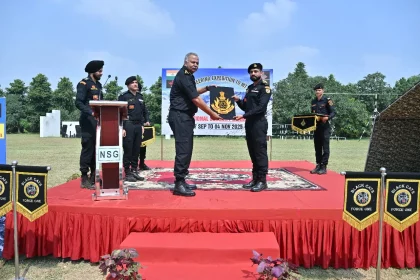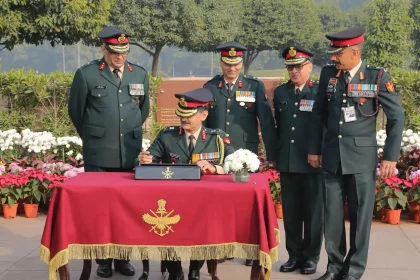Major General Ajay Misra Reviews Operational Preparedness of AOC Centre & Records
The visit underscored the Army’s continued emphasis on innovation, integration, and excellence in training.
14 Officers From INS Shivaji Visit MCEME Secunderabad to Strengthen Cross-Service Technical Collaboration
Such engagements are pivotal in building a unified approach to addressing the complex technological and operational challenges of future warfare.
Adjutant General Lieutenant General VPS Kaushik Meets NHRC Chairman to Strengthen Human Rights Collaboration
This engagement reinforces the Indian Army’s broader vision of being a professional, people-centric force, deeply committed to constitutional principles, rule…
15 NSG Commandos Embark on Pre-Everest Expedition to Mt Satopanth
By choosing Satopanth for its pre-Everest expedition, the NSG aims to combine rigorous high-altitude training with the spirit of adventure…
Major General S Radhakrishanan Takes Over as New Commandant of Army Institute of Cardio Thoracic Sciences Pune
The Army Institute of Cardio Thoracic Sciences (AICTS), Pune, is one of the premier healthcare facilities under the Indian Armed…
What Is Adjutant General in the Indian Army? Roles, Duties, and Importance Explained
The Adjutant-General not only administers but also safeguards the ethos of the Indian Army.






